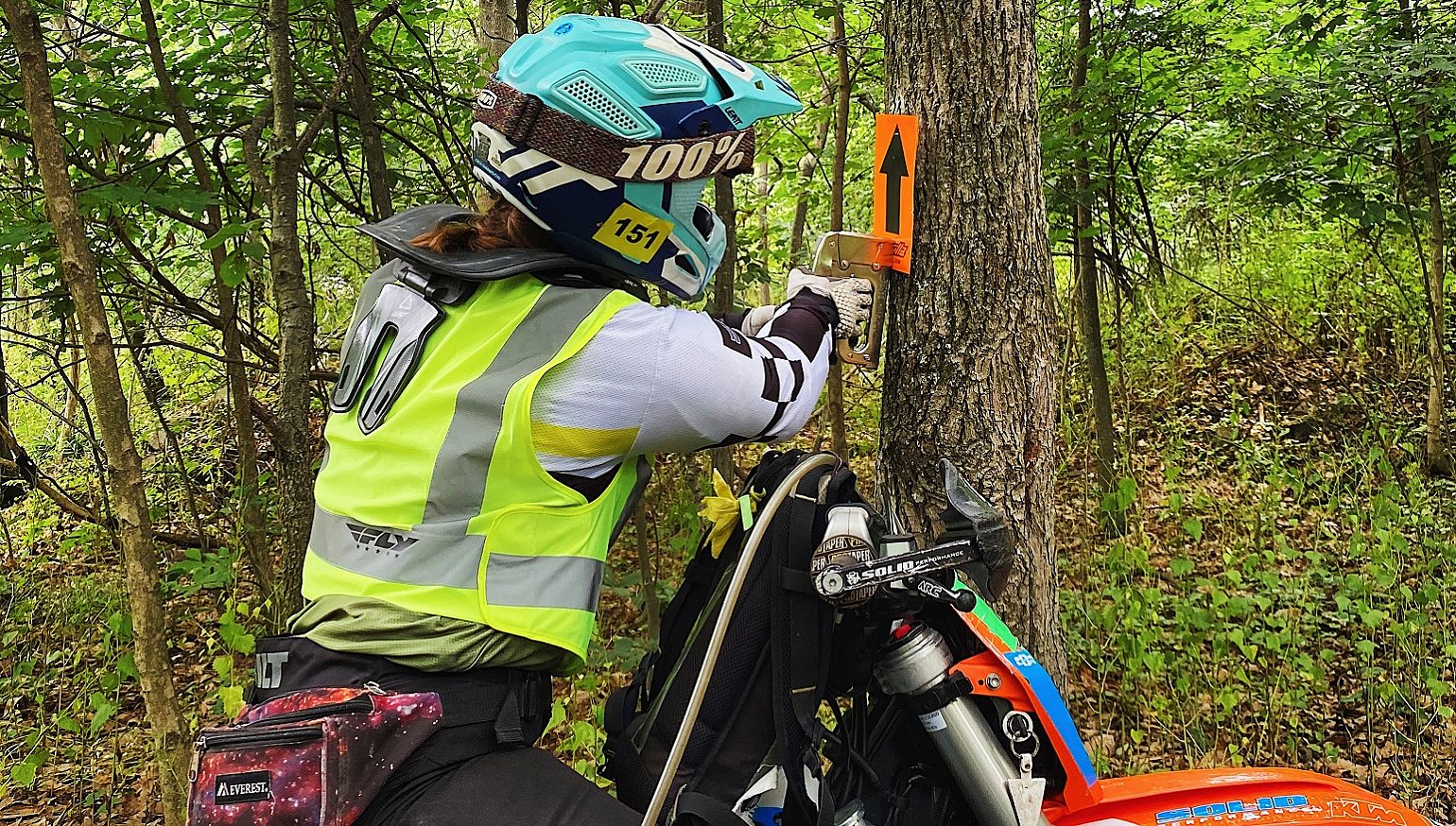The gray-haired man handed me a small green box filled with index cards with tattered edges, but perfectly arranged in alphabetical order.
His knuckles weathered from years of twisting the throttle and working the clutch, he carefully pulled out a few cards to show me. Names of family patriarchs crossed out to reveal the names of surviving sons. House phone numbers scribbled out and updated with cell phone numbers. Little notes about family connections and histories. Forty years of information carefully collected and documented, these cards were the road map for the Blain Foggy Mountain Breakdown Enduro, a notoriously rocky and well loved off-road race hosted in a small town called Blain, Pennsylvania, nestled in the Tuscarora State Forest.
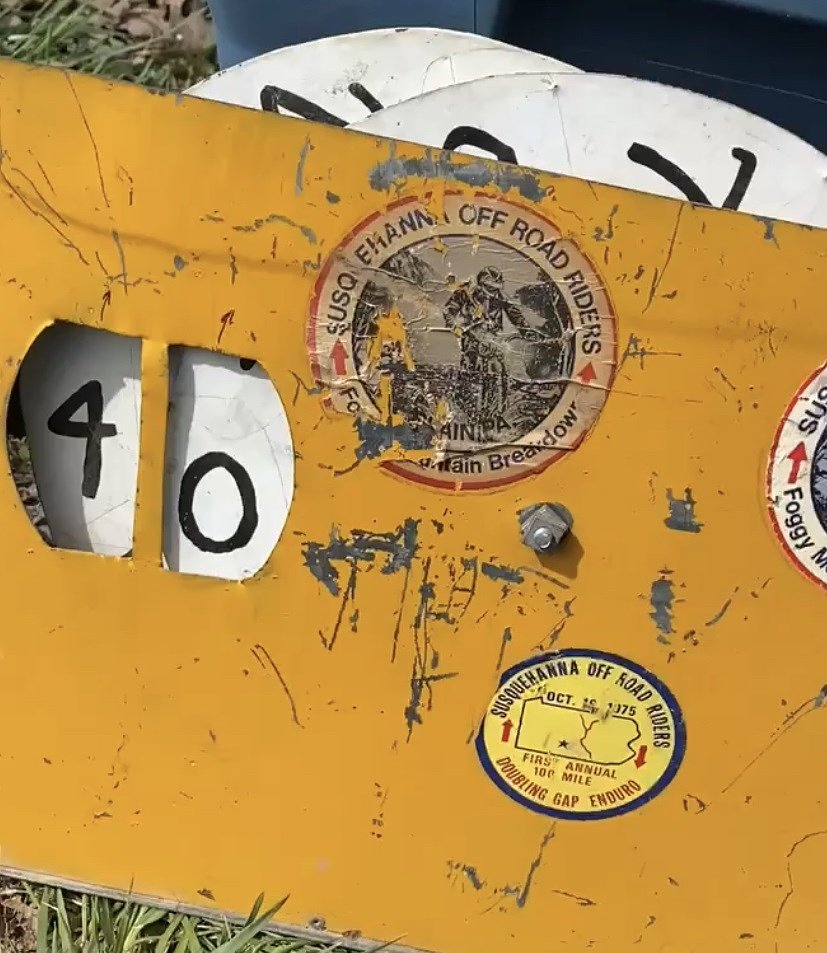
Editor’s note: Liz Kiniery is a member of the RevZilla Rider's Alliance, a team of everyday riders from across the nation, from all walks of life, on all types of bikes, that represents and embraces the diversity of the RevZilla ridership.
And here I was, in January of 2021, standing among the few remaining giants of the original hosting club, SORR, and members of my own club, the Delaware Valley Trail Riders. We had effectively been passed the torch.
Ours was a young club, but we’d been lucky to have several years of increasing membership, so we were up to the task. Our goal was simple and yet so complicated: revive this beloved enduro.
Before the event
A handful of our Delaware Valley club members drove to the top of a vista in the dead of winter and unloaded the bikes. Five of us, wearing every piece of thermal gear we owned. From where we parked, we could see the entire town of Blain below, its farm fields blanketed in white. And with two inches of snow on the ground, we rode, our knobby tires crunching through the icy crust.
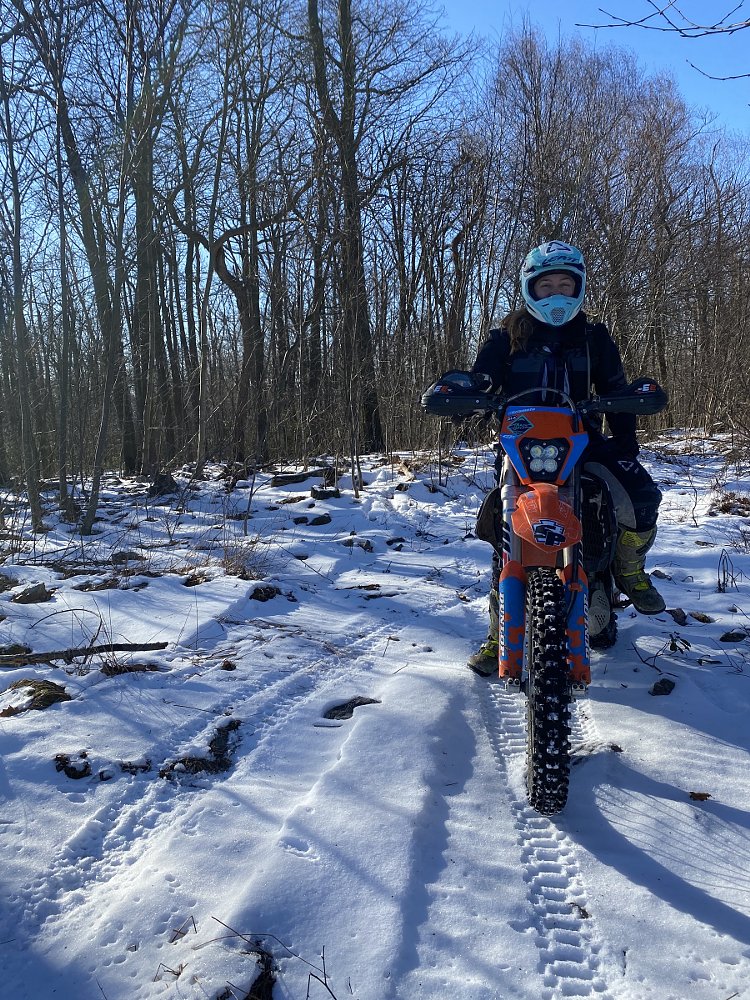
One of the most unique parts of this race is that the majority is run on state forest land, which requires extensive permitting and impact assessments from the Pennsylvania Department of Conservation and Natural Resources. So each time our volunteer group went out scouting, we would request special permission from the head forester just to be out there. Typically, motorized vehicles are prohibited in the forest. We'd mind hunting seasons and respect other user groups. We'd pull over and remove our helmets for horseback riders. We'd stop and chat with every passing hunter. We rode with our approval letters. We'd be gentle on the throttle to avoid leaving treadmarks or berms. And each time we assembled what we thought might be a finalized section of the race route, we would need to ensure it met DCNR's strict impact-mitigation standards.
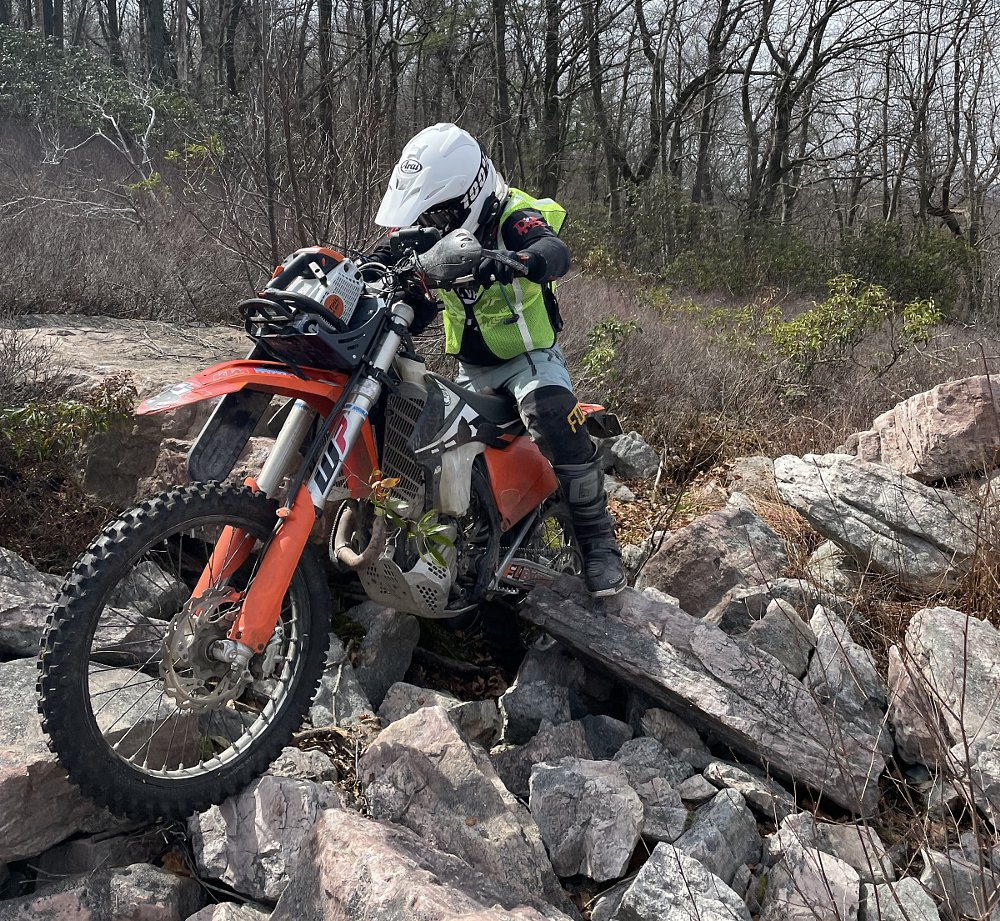
Our DVTR trail boss, Morgan, would ensure everything we ran was accurately represented via GPS and send the tracks over to the forester, who would then hike it and send us recommendations to ensure our route would have the smallest environmental impact. On several occasions, we needed to work in substantial re-routes around environmentally sensitive areas, like areas with new growth or streams. The back and forth was intense but productive, a true testament of two groups with specific and disparate visions of success working together toward a common goal.
We also met each of the five landowners who had historically allowed parts of the enduro to run on their property. One of our first weekends up in Blain, one of the legacy SORR club members drove us around town, pointing out each property and road crossing while we snapped photos, marked locations on GPS, and took copious notes. It was certainly a daunting feeling, catching up on decades of history, but I was grateful for the knowledge-share from the folks who were deeply intimate with the event and everyone who was needed to help make it happen. Not only were we able to find each name and number in that old green box full of index cards, but each time we needed to meet someone, one of the legacy club members would help make the introduction.
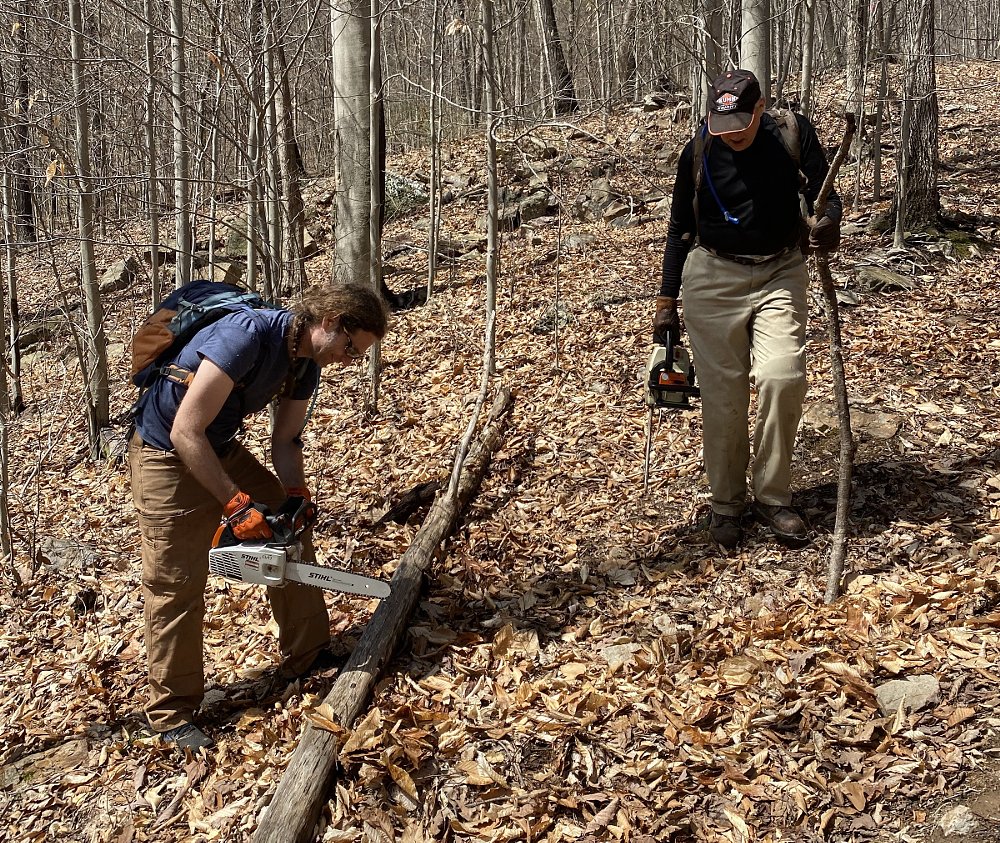
Because of that, it felt like we were being added to the history. Jim, who used to lead one section through private property that was now hopelessly overgrown, hiked the entire thing with us to help us uncover and mark all of the old trail. We rode a different property with the landowner's son, who still races off-road, and rides literally faster than any one of our club members could ever dream of riding. And this all happened five times over. The landowners showed us the old trails and regaled us with stories of past runs, and we promised we'd take care of their land and treat it with respect.
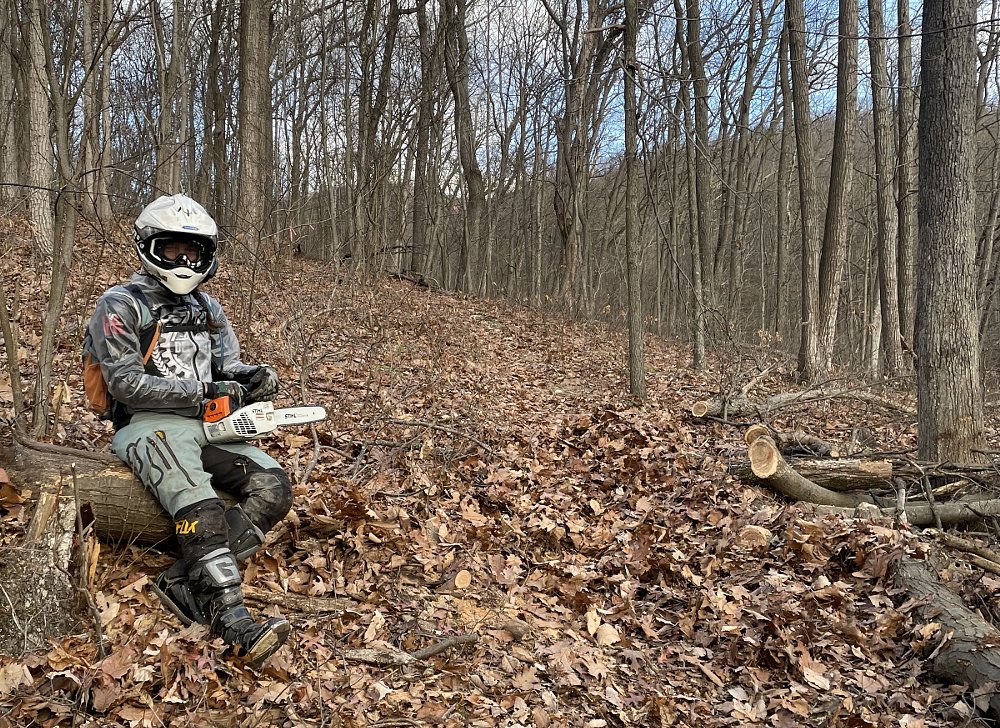
We also met the members of the fire department, who would take over the venue where the enduro was hosted and cook for everyone. We connected with two area EMTs and the fire police, who would help provide emergency support throughout the ride. We shared our route with the local HAM radio crew, who ensured that we would have a way to communicate to every part of the course despite terrible cell reception in the forest. We ate one million meals at the local hotel, and picked up plenty of coffee and snacks at the market. Locals would come out and scout with us, and help us clear the trails. And the word spread so fast — the enduro was back.
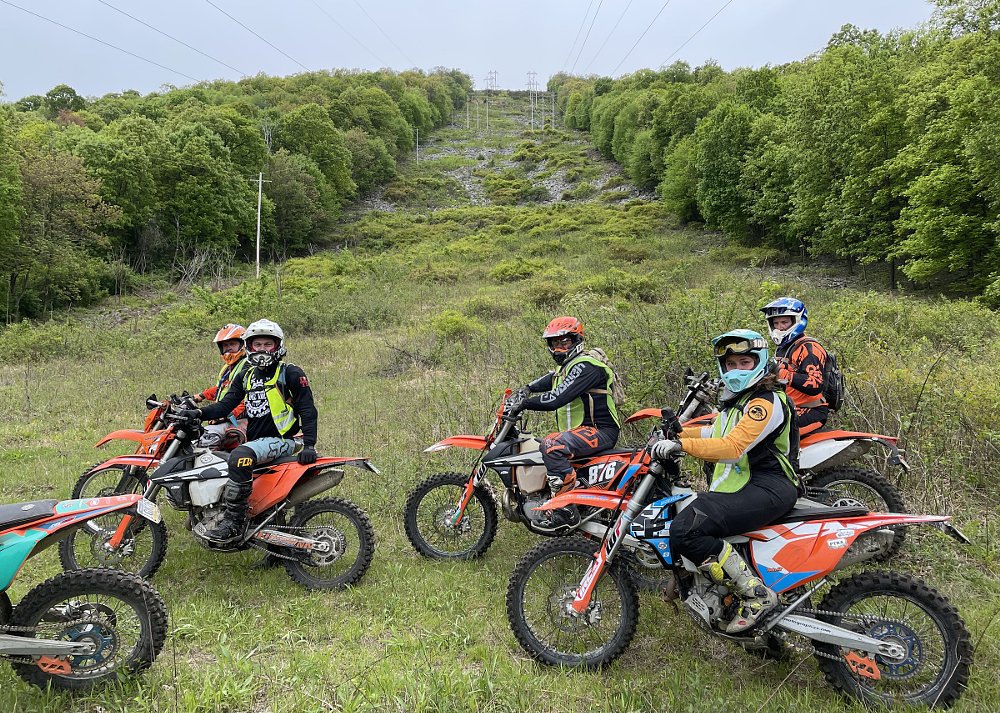
The final weeks we spent buttoning up paperwork — securing permits with the Pennsylvania Department of Transportation, attending meetings with the DCNR, emailing over insurance certificates and temporary easements. We ran the final course and timed it, built our route sheets and published final details. We drew our rider rows (almost 200 registered riders for our first go!) and set up a team of 100 volunteers who would arrow the course, pre-run it, sweep it during the event, support in an emergency, work registration, help at road crossings, and work on our check crews. This administrative work and planning alone took an additional 1,000 volunteer hours, split amongst a dedicated small crew of five people who found time on weeknights and on lunch breaks.
And then the day came.
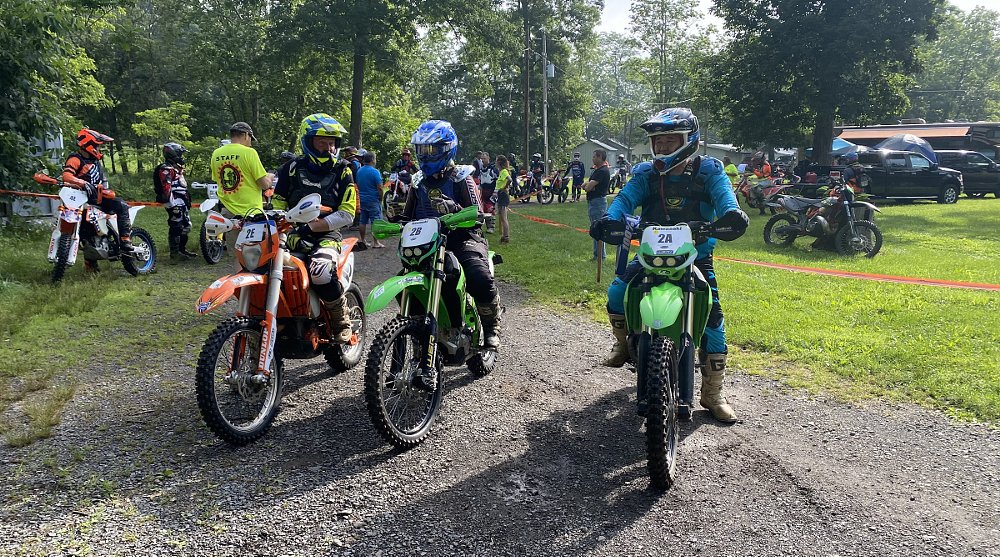
During the event
I will never forget the overwhelming feeling of anxiety I felt as I walked toward the line right before key time. But riders were lined up, clocks were running, the trails were marked and volunteers were in place. And for the next six hours, 100 volunteers supported and timed the 200 riders through our course. We even had partner clubs supporting us with some of the more technical aspects of running a timekeeping enduro. We marked riders as they came through race sections, radioed to the DCNR as riders cleared parts of the course, and responded to a handful of support calls. It was truly a monumental effort, made possible because of everyone's individual volunteer contribution.
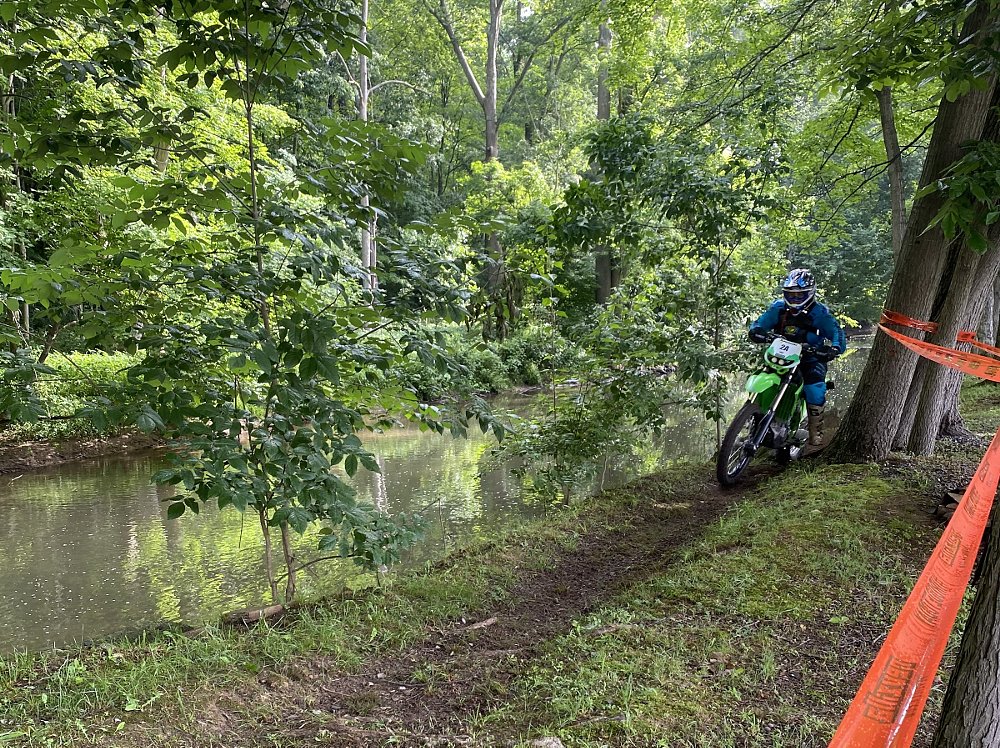
The course was tough — it had always been tough — but riders made it through each section, and when the first rows made it back to the picnic grounds at the end key time, there was no greater feeling.
After the event
And then the next morning, 40 of us met promptly at 9 a.m. back at the picnic grounds. The riders were well cleared out; they had all packed up their bruised bodies and dirty bikes and made the trek back home for Monday, but we volunteers were still there. Monday was our remediation day.
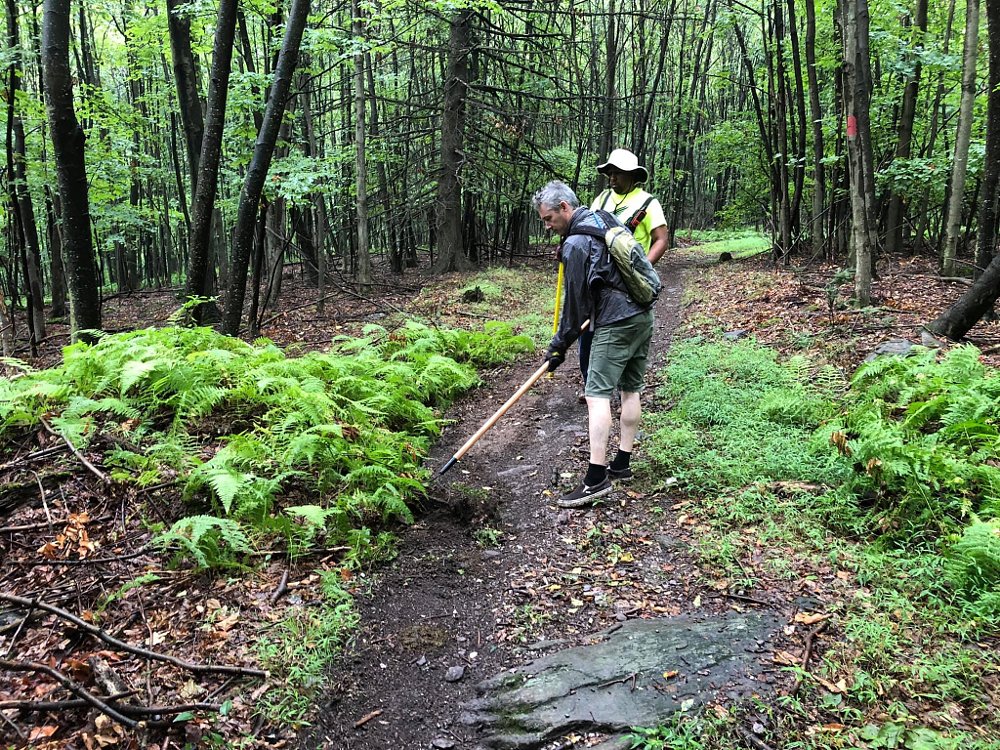
As part of our agreement with the DCNR, we had to hike and remediate each of the sections of forest that we had used during our enduro. Our goal was to remove evidence of a motorized event in the forest and mitigate our one-day event's impact to the trails. That included raking in berms, filling in ruts, rebuilding water bars, hiding trail entrances, and even removing the staples from the trees where directional arrows had been posted on the course. Yes, we removed the staples from the trees.
So we got to work. We spent the entire day removing all evidence of the blood, sweat, and tears we had put into the event for months. That day, 40 folks each spent six hours in the woods, hiking with fire rakes, painstakingly erasing our trace. And while most of our event was remediated that very next day, we waited for the approval from our forester, who personally hiked each of our sections post-remediation.
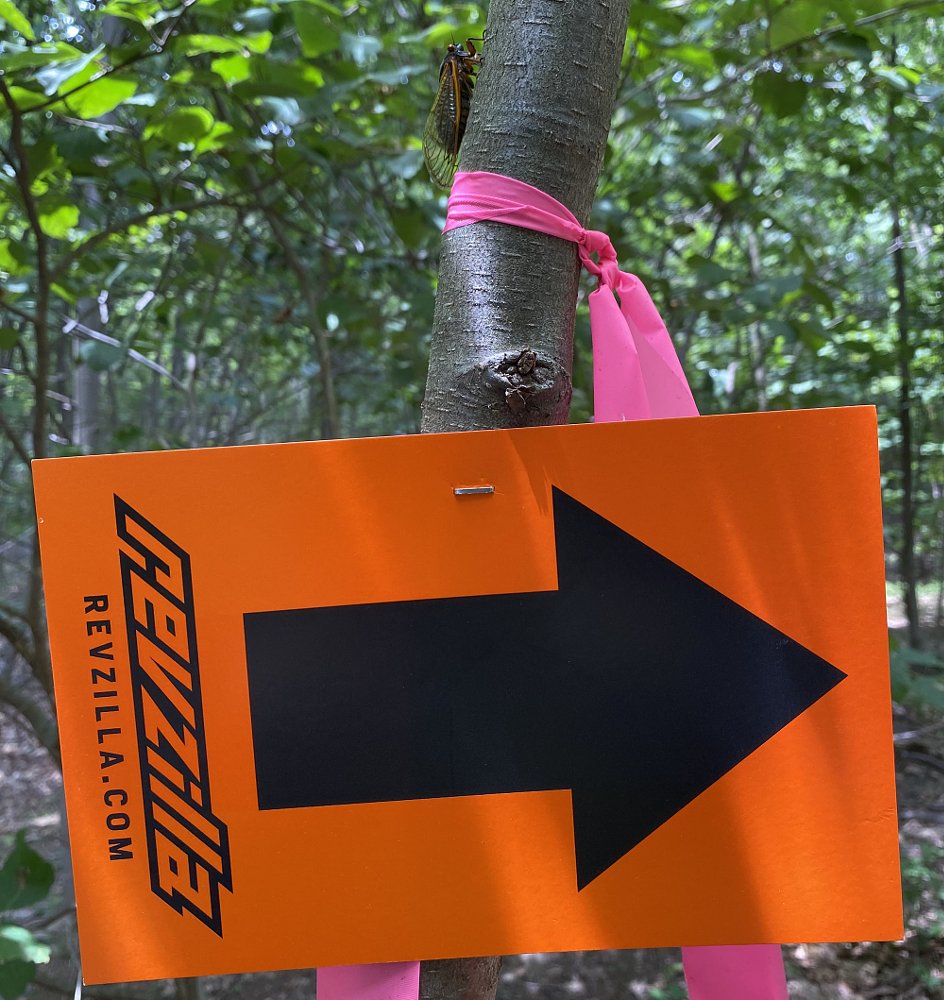
The next time
We’re ready to do it all again.
It feels insane to enter back into this cycle of preparation and remediation for the benefit of a one-day race, but we're riders. We’re all a little bit insane. We're following in the footsteps of many who came before us and still work alongside us, those who ensure that riders in the Northeast continue to have legal access to amazing trails in spite of all of our area's land-use restrictions.
To be one of the few sets of knobby tires on a trail that snakes through a beautiful forest, to bring vitality and excitement to a small town, to engage so many entities within that town to pull it all off, and to prove that true shared forest access is attainable with dedication and hard work. That's what makes it worth it.

 Membership
Membership

